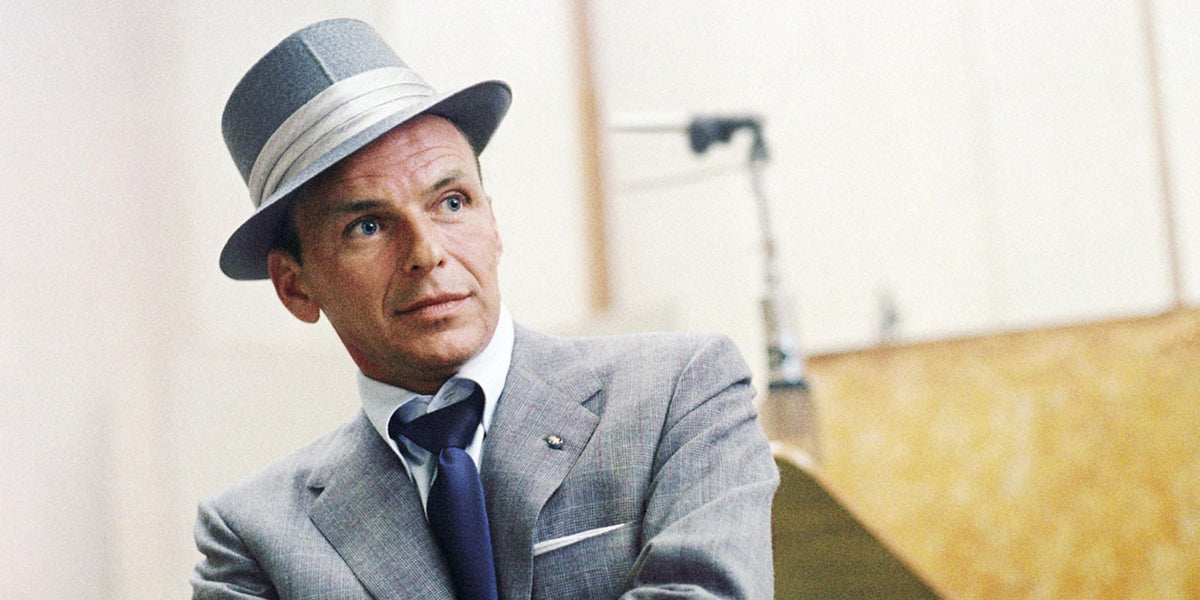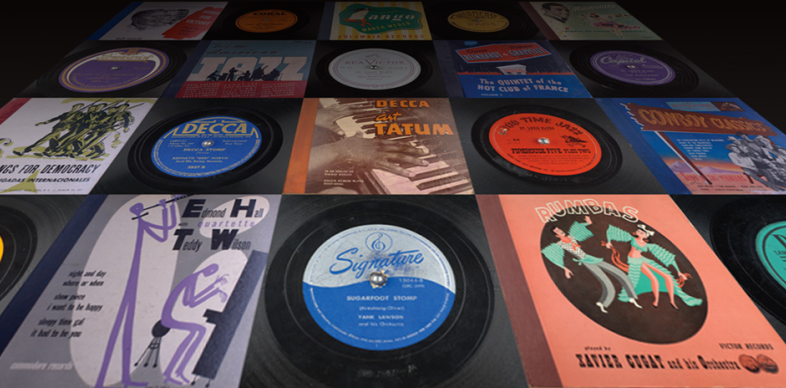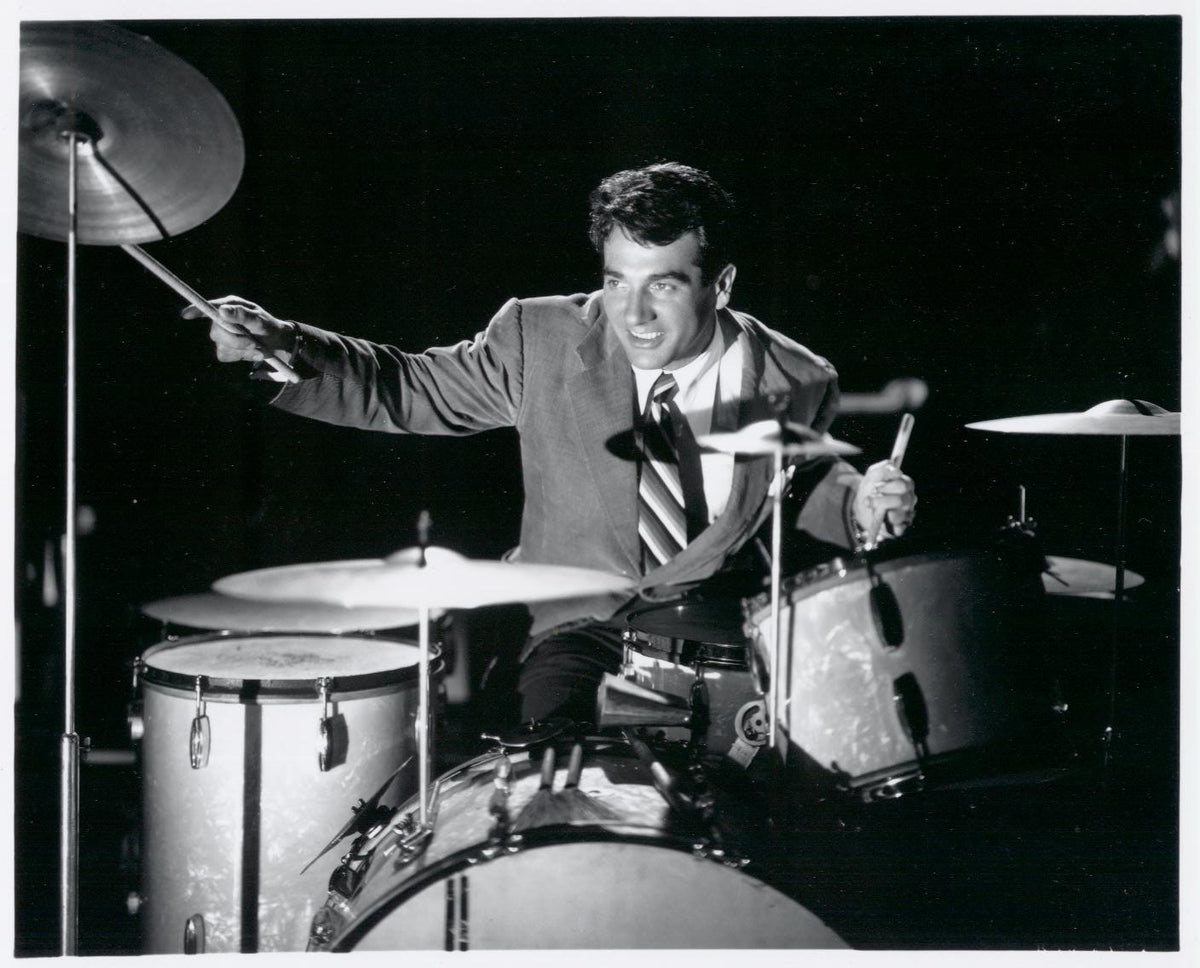Today, we’re selling a faithful recreation of the first LP ever made, The Voice of Frank Sinatra. Our edition comes in a package that best replicates the album as it was when it was released in 1948. You can buy it here.
Below, read an excerpt from the new Liner Notes of the album by Charles L. Granata.
No one is certain who came up with the idea. Those details rest with foggy memories and the passage of time. It may have been Columbia A&R Director Manie Sacks, or producer Bill Richards. Perhaps Axel Stordahl — Frank Sinatra’s arranger, conductor and music director — devised the plan. Most likely, it was the artist himself.
“Our house in Toluca Lake was right on the water,” recalls Frank’s daughter, Nancy Sinatra. “We had a big, wooden raft and I remembered my dad, Axel Stordahl and Sammy Cahn stocking it with sandwiches and bottles of beer and floating around, playing cards out there for hours on end.” With Stordahl — the architect of Sinatra’s Columbia years — in such close proximity, it’s plausible that the idea was conceived while the triumvirate lingered on the lake, far from the relentless tugging of Sinatra’s young fans.
Regardless of “who-and-where,” Sinatra appeared at Columbia’s Vine Street Playhouse in Hollywood on Monday, July 30, 1945, stepped up to the microphone, and commenced with a project that altered the course of his career and influenced the history of recorded music. With aplomb marking dozens of previous sessions, he recorded the first four sides of a new, eight-song 78-RPM album set: A sophisticated thematic collection known simply as Columbia C-112, The Voice of Frank Sinatra.
While photo album-style binders housing four, 10-inch shellac records weren’t new, they usually consisted of previously released singles recorded at different times, with varying musical settings. Vocalist Lee Wiley had begun recording collections featuring the songs of specific songwriters, such as Porter and Gershwin. This album, however, sought to tell a story through its songs — each on purposefully chosen to advance the idea — all orchestrated with consistent musical temperament. Although it would take another decade for Sinatra to fully develop the concept of his conception (with his enviable string of brilliant thematic long-play albums at Capitol Records), The Voice of Frank Sinatra inaugurated one of the most impressive bodies of work in all of popular music.
Did he know?
Was there the tiniest notion, as Frank began intoning the Gershwins’ plaintive “Someone to Watch Over Me,” that the moment was fundamental and historic?
Whether he did or didn’t, this is certain: The song selection — eight then-current tunes (many of which would stay in Sinatra’s “book” and become standards — was impeccable. Likewise the orchestrations, which were arranged by Stordahl for a demure, nine-piece chamber orchestra.
The vocals were flawless, reflecting the finest characteristics of a human instrument that’s been analyzed, studied and lauded as the model of its kind for more than 75 years. And, the instrumental interpretations — played by the most astute musicians in New York and Hollywood — were unrivaled in their perfection.
The Voice of Frank Sinatra illustrated Sinatra’s ease of blurring the lines, molding and defining himself as a pop singer who appreciated the dramatic and romantic subtleties that could result from blending serious music with pop. As if by magic, every element coalesced to create a series of soft, enticing performances that beckoned one to stop, listen and feel. For these recordings, Sinatra stretched beyond his best, infusing the vocals with such tender intimacy that George T. Simon of Metronome magazine called The Voice of Frank Sinatra, “The greatest exhibition of completely convincing crooning ever put into a collection.”
Could anyone else have pulled off something so simple, yet stunning?
Bing Crosby, perhaps — but he didn’t have the persuasiveness.
The power lay within that voice — The Voice, as Sinatra was affectionately known — crooning gently to postwar girls and their beaus. With these recordings, Sinatra not only melted the hearts of his female fans; he won over their hardened male counterparts who’d previously viewed him with contempt and disdain.
Back from overseas and desperate to rekindle relationships suspended by war, scorn turned to adulation as Sinatra became the soundtrack to their renewed romantic endeavors. “I’ve been a Sinatra fan since hearing Martin Block preview The Voice of Sinatra on New York’s WNEW radio in 1946,” remembers Sinatraphile Harry Agoratus. “When I heard ‘Try a Little Tenderness’ I realized that Sinatra was a singer, and not just an object of teen girls’ affection.”
The uniqueness of what transpired in the studio wasn’t lost on the album’s musicians, either. “Everybody in the orchestra knew that the recordings would last, because of their quality,” recalled jazz guitarist George Van Eps. “There was nothing faddish about anything we did. Good music lives forever; if it’s good to begin with, it’ll always be good. And, Sinatra and Axel Stordahl were very good.”
The Voice of Frank Sinatra teems with examples of the singer’s vocal finesse, and the sensual, fluid ‘legato’ phrasing he was heralded for. Listen to the way he sings the last chorus of “You Go to My Head,” and the beguiling manner in which he tosses off the line, “All debutantes say it’s good…” in “Why Shouldn’t I?” Or, how he treats “(I Don’t Stand) A Ghost of a Chance” and “Paradise” as reverentially as if he were incanting a vesper. To my ear, his performance of “These Foolish Things” is intimacy personified: seductively melodic, yet disarmingly innocent in spirit and tone.
So beloved were these recordings that the original 1946 release quickly reached No. 1 on Billboard’s album charts, and remained a favorite in the Columbia catalog for years. Among the collection’s greatest fans was producer George Avakian, who was responsible for selecting the first batch of pop and jazz titles to be issued as 10-inch LPs in 1948.
“I purposely made The Voice of Sinatra — CL 6001 — our very first pop LP,” Avakian explained. “I admired the cohesiveness of the program, and Sinatra was the best-selling and most important pop artist we had at the time. I just loved the album, and bringing it to the new format made perfect sense.”
Though he performed for another 50 years, Sinatra rarely matched the immediacy of these groundbreaking 1945 performances. Seventy years after their release on a 33-⅓ LP, they remain — as George T. Simon noted in 1946 — “THE way ballads should be done: simply, sincerely, musically.”
As the world celebrates both the 70th anniversary of the “Birth of the LP” and Frank Sinatra’s 75th anniversary as a Columbia Records artist, The Voice of Frank Sinatra is richly deserving of recognition as an essential part of recording history — and this authentic Vinyl Me, Please 10-inch vinyl reproduction, is meticulously faithful to the original in every way.
Technical Notes on the Recording
The original recording sessions for The Voice of Frank Sinatra were made on lacquer coated 16-inch recording discs. As many physical items do, these pre-magnetic tape recording elements have deteriorated over the last 72 years due to use and the chemical composition of the lacquer compound containing the delicate grooves. This deterioration has manifested itself as noticeable sonic blemishes that affect the clarity of the recording: specifically, a light “swishing” or “rubbing” sound. While there are a plethora of digital sonic restoration tools at our disposal, our goal in transferring, restoring and remastering these historic recordings has been to preserve and enhance the quality of the music, especially the tonal characteristics of Frank Sinatra’s voice. Therefore, we have used the least amount of processing in order to present the best musical program possible. Despite our best efforts, some anomalies — such as the “swishing” and “rubbing” present on this recording — cannot be removed without seriously compromising the integrity of the music. When listening, please remember the age of these recordings, their historic and musical significance, and that any noises or defects you hear are inherent in the original masters and are not due to a problem or defect with this newly minted vinyl reproduction.
Charles L. “Chuck” Granata is a writer, record producer music historian and archivist. He is the author of the award-winning book Sessions with Sinatra: Frank Sinatra and the Art of Recording (Chicago Review Press, 1999), and producer of Nancy Sinatra’s weekly radio program on Sirius-XM radio.
Related Articles
Join the Club!
Join Now, Starting at $36Pages








